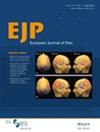Slow depolarizing electrical stimuli reveal differential time courses of nociceptor recovery after prolonged topical capsaicin in human skin
Abstract
Background
We examined de-functionalization and temporal functional recovery of C-nociceptor evoked pain after topical 8% capsaicin applied for 4 consecutive days.
Methods
Capsaicin and placebo patches were applied to human forearm skin (n = 14). Cold, warmth and heat pain thresholds, pain NRS to electrical and thermal (48°C, 5 s) stimuli and axon reflex flare were recorded weekly for 49 days. Mechanical and heat sensitive (‘polymodal’) nociceptors were activated by single electrical half-period sinusoidal pulses (0.5 s, 1 Hz). Mechanical and heat insensitive (‘silent’) nociceptors were activated by 4 Hz sinusoidal stimuli.
Results
Capsaicin abolished heat pain. Sensation to electrical sinusoidal stimulation was reduced but never abolished during the treatment. Pain to electrical 1 Hz ‘polymodal’ nociceptor stimulation took longer to recover than pain ratings to 4 Hz 2.5 s sinusoidal stimulation activating ‘polymodal’ and ‘silent’ nociceptors (35 vs. 21 days). Heat pain was indifferent to placebo from day 21–49. Axon reflex flare was abolished during capsaicin and only recovered to ~50% even after 49 days.
Conclusions
Capsaicin abolishes heat transduction at terminal nociceptive endings, whereas small-diameter axons sensitive to sinusoidal electrical stimulation can still be activated. 1 Hz depolarizing stimuli evoke burst discharges, as demonstrated before, and recover slower after capsaicin than single pulses induced by 4 Hz. The difference in recovery suggests differential time course of functional regeneration for C-nociceptor sub-types after capsaicin. All sensations recovered completely within 7 weeks in healthy subjects. Our findings contrast analgesia lasting for months in spontaneous neuropathic pain patients treated with 8% capsaicin.
Significance
Sinusoidal electrical stimulation can still activate small diameter axons desensitized to heat after 4 consecutive days of topical 8% capsaicin application and reveals differential temporal functional regeneration of C-nociceptor sub-types. Electrical sinusoidal stimulation may detect such axons that no longer respond to heat stimuli in neuropathic skin.


 求助内容:
求助内容: 应助结果提醒方式:
应助结果提醒方式:


